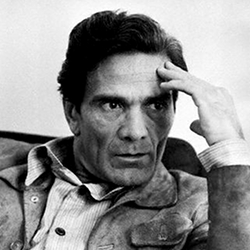
Review: 300: Rise of an Empire (2014)

Cast: Sullivan Stapleton, Eva Green, Lena Headey
Director: Noam Murro
Country: USA
Genre: Action | Drama | War
Official Site: Here
Editor’s Notes: 300: Rise of an Empire opens in wide theatrical release Friday, March 7th.
300: Rise of an Empire, the sequel to Zack Snyder’s 2006 action orgy 300, is all foreplay and no finish – only in this case the foreplay is effectively, chronically boring. Incidentally, Snyder (who co-wrote this sequel with Kurt Johnstad) directed one of the silliest sex scenes in Hollywood history: the sloppy bit of bonking between Silk Spectre and Night Owl in 2009’s Watchmen. Snyder may know his graphic novels (300 is also based on Frank Miller’s), but he doesn’t exactly win points for carnal knowledge.
300: Rise of an Empire, the sequel to Zack Snyder’s 2006 action orgy 300, is all foreplay and no finish – only in this case the foreplay is effectively, chronically boring.
I use sexual innuendos here not simply out of facetiousness, but because 300: Rise of an Empire tries to use action spectacle to stimulate our will to power. The film essentially represents a CGI-heavy phallic symbol. It pits the Persians against the Greeks in the wake of the Battle of Thermopylae, and shows how one empire tries to control the other not just through military but often physical means of domination.
For example, Rise of an Empire’s best sequence (mostly because it is so out of character to the film’s unwavering solemnity) involves Persian ally and villainess Artemisia (Eva Green, terrifically wicked here) challenging our Athenian hero Themistocles (Sullivan Stapleton) with sex. Due to failed diplomacy, the two jockey for power using their large libidos whilst in the matriarch’s own cabin. They vie for different sex positions, trying to dominate each other. The scene recalls what Oscar Wilde once said: “everything in the world is about sex, except sex. Sex is about power.”

The sequence is an offbeat moment in a film that can otherwise be classified as a thundering, bombastic non-event. It’s an echo chamber of clamorous battle cries and tempestuous naval attacks viewable in IMAX 3D (the format I saw it in). Shot by cinematographer Simon Duggan, this heaving epic is casted with the same glowering skies and heavy shadows that trademark Snyder’s rusty, industrious visual style introduced in 300 and seen recently in Man of Steel. The 300 sequel, however, is directed by Noam Murro who got on Hollywood’s radar with Smart People. Rise of an Empire would not appeal to those types of characters.
The film begins immediately after King Leonidas and his 300 Spartan warriors perish from a storm of arrows commanded by Persia’s tyrannical ruler, King Xerxes (Rodrigo Santoro). The gold-skinned tyrant plays almost no part in the second film other than when brandishing Leonidas’s head to a crowd of adulating citizens. Rather, the film focuses on the Battle of Salamis in 480 BC, which involved a series of naval battles between the Persian and Greek fleets, respectively led by Artemisia and Themistocles, in the foul straits just off the island of Euboea.
Rise of an Empire has the same visual surface, but without the right direction the form hollows out and the content spirals into monotony.
The sea battles are unimaginative compared to the set pieces of its predecessor. 300 showcased a cliff skirmish, a wall of corpses, and a sandstorm of arrows that blotted out the sun. In Rise of an Empire, Murro restores the same slow-motion combat that made 300 a ballet of extraordinary combat with brutal eviscerations, but inelegantly. Snyder successfully romanticized the macho power that epitomized the Spartan spirit. With Murro, there is no joy in repetition as his ability to stage action is limited to a series of shots and nifty camera moves.
The screenplay also is not endowed with the epic one-liners that made 300 a pop culture phenomenon. This time, we hear rally cries and speeches that don’t win back our enthusiasms. 300 pumped up its audiences; Snyder’s romantic, erotically-charged visuals complimented the film’s earned bombast and empowerment. Rise of an Empire has the same visual surface, but without the right direction the form hollows out and the content spirals into monotony.
Murro’s direction lacks the rise-and-fall tension – of good gradually toppling evil and resting on the laurels of victory – found in great action spectacle. The “rise” of an empire – ostensibly felt with the union of Athens and Sparta near the end – has no impact once the film thuds into its climax. The events unfold like set up for a third film yet the stakes are not raised. Despite a high death count, 300: Rise of an Empire, as a Hollywood enterprise, is the real casualty here. Its forgettability threatens to render a classic line like “Spartans, tonight we dine in hell!” completely obsolete.






















